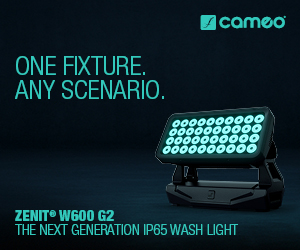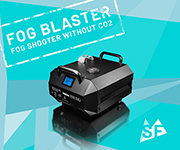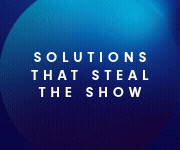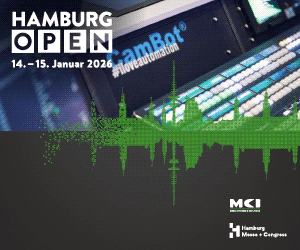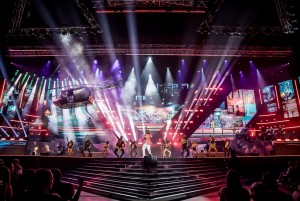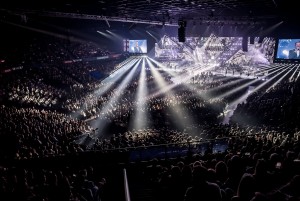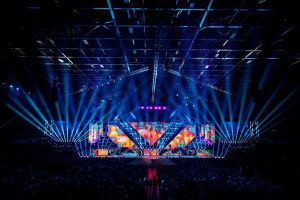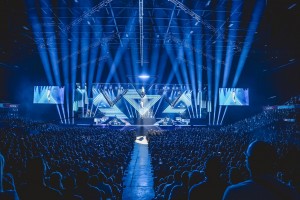Aktuelle News & Schlagzeilen
“Afrikaans is Groot” lit with Robe
The 2024 “Afrikaans is Groot” (AIG) concert series - comprising nine sold-out performances over two consecutive weekends - was staged at SunBet Arena in Time Square, Pretoria, South Africa, produced by Coleske Artist Management.
The show was lit by lighting designers Joshua Cutts and André Siebrits from Visual Frontier. On the lighting rig were a load of Robe moving lights, all delivered by Johannesburg-based lighting rental company MGG. Cutts and Siebrits have both worked on the annual event previously. In fact, Cutts has clocked up around seven years as lighting designer and Siebrits at least six, the last four as lead programmer. 2024 was the 10th anniversary of the overall event.
The general theme this year was “gold”, so for lighting that immediately suggested a palette rich in ambers and warm tones as Cutts and Siebrits set to work on producing their lighting. “This event has evolved into more of a Visual Frontier co-design”, says Cutts, with him concentrating on the artists and atmospheric elements, while Siebrits takes care of programming all the effects.
A wide variety of Robe kit was used, including Esprites, BMFL WashBeams, Blades & Spots, LEDBeam 100s, 150s and 350s, Pointes, MegaPointes, Spiiders, Tetra2s and Squares, plus four RoboSpot base stations, all adding up to 361 Robe products on the rig along with some other lights making up the total of over 800 light sources.
It is an “all ages” show - from teens to grandparents - there is something for everyone and therefore the aesthetic must be a fine balance of being visually stimulating yet not overpowering. Twenty-three artists took to the stage for the two-and-a-half-hour show, and the lighting department had to give each one a different and distinctive look.
The 50-metre-wide stage traversed the complete width of the arena. Set and stage layout was designed by MGG’s Günther Müller. The technical director was Coleske Artist Management’s Ian Vos and their creative producer was Barry Pretorius, so much of the inspiration for all departments came from these two who decided the overall style, which Cutts and Siebrits took as a starting point for the lighting design.
The diagonally orientated design was large, prominent and also set the tone, and one of the initial tasks for lighting was in-filling any black spaces in between the LED elements. Three automated triangular-shaped header pods rigged over the downstage/forestage area were populated with LEDBeam 150s and Tetra2s on one side and a set of blinders on the reverse for contrasting effects. Each pod was rigged on three motors so they could pitch, tilt and completely change the structural appearance of the stage space.
The Esprites and LEDBeam 350s were alternated along two L-shaped trusses covering three-quarters of the side stage depth, and from these positions they could cover the stage with washes and beams. LEDBeam 100s were positioned left and right of the main screen for a low angle flare, and the LDs generally tried to contour lighting to the geometric shapes in the stage and screen design.
The Pointes and MegaPointes were the beam workhorses of the show, with the MegaPointes positioned along the front edge of the stage. These positions allowed the roof space between the stage and the audience to be filled with the beams, an area that is often dead space, but here Cutts and Siebrits utilised it to introduce additional lighting movement. LEDWash 600s were used as audience lighting, rigged in six trusses flown above the arena, and the Spiiders formed part of the back wall V-shaped feature lighting where the Flower effect and pixel capabilities could be maximised.
The 27 Esprites were the main back light onstage, also specials on the band and dancers. The show featured multiple guest artists, so specials were vital, and this year, three of those Esprites were also operated via the RoboSpot system. The BMFLs were the principal key lights - four also running on RoboSpots and the balance used for general stage front light, with the BMFL Blades especially used to light the band members.
The initial meetings for AIG typically start around February/March of the year and the concerts are always at the end of November. An extensive creative brief developed by Pretorius - relating to looks, feels, moods and moments - is essential as multiple departments and disciplines need to synchronise to this. Cutts and Siebrits receive the music in advance, and nearer to showtime, two weeks of intensive previz ramps up, followed by a week of pre-production. Any changes in music or presentation have to be communicated in a timely manner so everyone can adjust accordingly.
MGG also gets involved early on. As soon as Cutts and Siebrits have the basic lighting plot, the MGG team looks at it and decides on the best approaches and solutions for rigging and engineering, and how to achieve the design in the timeframe. Müller is at the heart of co-ordinating and making this work, “and he and all the MGG technicians are great collaborators”, says Siebrits.
(Photos: Anriette van Wyk/Kief Kreativ/Quintin van der Merwe/Quintessential)
SCHLAGZEILEN
news archiv
suche
© 1999 - 2025 Entertainment Technology Press Limited News Stories

